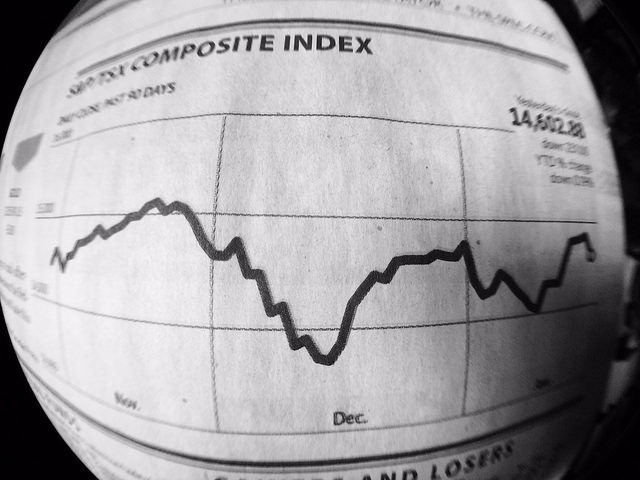The Lyxor Hedge Fund Index was down -1.4% in September. 3 out of 11 Lyxor Indices ended the month in positive territory. The Lyxor CTA Long Term Index (+4.0%), the Lyxor CTA ShortTerm Index (+2.3%), and the Lyxor L/S Equity Market Neutral Index (+0.4%) were the best performers.
In contrast with the sell-off by last fall, the current recovery process is proving more laborious. Continued soft macro releases, several micro turbulences (VW, GLEN, the US Healthcare) and signs that the Fed might be more concerned about global growth, drove markets to re-test the end-of-August lows. L/S Equity Long bias funds and Event Driven funds were yet again the main victims. Conversely, CTAs, Global Macro and L/S Equity funds with lower or variable bias, successfully navigated these challenging times.
“Quantitative easing combined with tighter regulation is growingly questioned. The former is boosting re-leveraging, the latter is trapping liquidity within banks. Both are increasing market risks. With few obvious growth gears in sight, we expect moderate and riskier asset returns.” says Jean-Baptiste Berthon, senior cross asset strategist at Lyxor AM.
Pressure remained on the L/S Equity Long bias funds. They continued to underperform, with broad markets bleeding back to the end-of-August lows. Their drawback accelerated by month-end on the healthcare sector’s debacle. They held their largest allocation in the non-cyclical consumers sectors (which includes healthcare stocks). The H. Clinton’s tweet, tackling drug prices hikes at one specialty-drug company, resulted in a sudden re-assessment of the whole sector’s revenues and M&A prospects. Indeed, these drug pricing anomalies reflect a broader transformation of the healthcare space since 2014. Since then, waves of Biotech and Generic companies’ acquisitions granted Pharma with much greater pricing power. The current correction might be bringing back M&A premiums and fundamental forecasts to a more sustainable profitability regime.
In contrast, Variable bias funds continued to successfully navigate a challenging space, in Europe especially. They finished the month only slightly down. They adequately not re-weighted yet their net exposure. Instead they actively traded around positions.
Market Neutral funds managed to weather the mid-month Fed sector repositioning. They also benefitted from wider quantitative factors differentiation, with Momentum outperforming Value. The short-term backdrop for the strategy remains riskier, less likely to profit from a potential rebound, and threatened by higher rotation risk, in the healthcare sector in particular.
Event Driven funds were again and by far, the main losers. Bargain hunting in the most beaten down securities allowed Event Driven to start the month on the right foot. However the valuation recovery didn’t last, caught up by the post-FOMC uncertainty. The losses accelerated in the last two weeks. In tandem with L/S Equity funds, they got hit by the healthcare meltdown. Strongly allocated through Merger arbitrage and special situation, the sector severely hit the whole Event Driven space. Valleant, Baxter, Allegan, Perrigo were amongst the largest return detractors.
L/S Credit Arbitrage funds’ returns were in line with the global index. The perception of risk remained elevated, factored in widening HY spreads, in the US especially. Lyxor L/S Credit funds remained reasonably conservative. There was volatility in cross credit Fixed-income arbitrage ahead of the Fed FOMC: this sub-strategy slightly underperformed.
CTAs, stars of the month. After being initially hit on their short energy exposures, CTAs then hoarded gains from their long bond exposures. With limited or negative exposures to equities, they dodged most of the market turmoil. They recorded small losses in FX and agricultural.
The sell-off since the end of August combined fundamental and technical drivers. CTAs’ involvement in the debacle was recently debated. Lyxor observes that Long term models cut their equity allocation to a conservative net exposure of 25% before the sell-off. During the sell-off, they further cut their equity exposure to around 5-10%: not a key factor in the selling pressure. During the sell-off, most Short term models further cut their about-zero net exposure down to -25%. The ST models move was more aggressive. But they manage a tiny portion of total CTAs’ AuM (less than 15% of the around $300bn CTAs’ total assets). The firm therefore see little evidence that CTAs were a substantial culprit for the equity sell-off.
By focusing on FX and rates, Global Macro dodged most of the September equity volatility. With limited exposure to commodities and shrinking allocation to equities (from 15 to less than 10% in net exposure), Global Macro dodged most of the September volatility. The bulk of their directional exposure was in the FX space. Their long in USD vs. EUR, GBP and CAD, produced marginally positive returns. Their market timing on rates added gains. They rapidly rotated their bond exposures back to the US, as it became probable that the Fed’s normalization process would be postponed.


